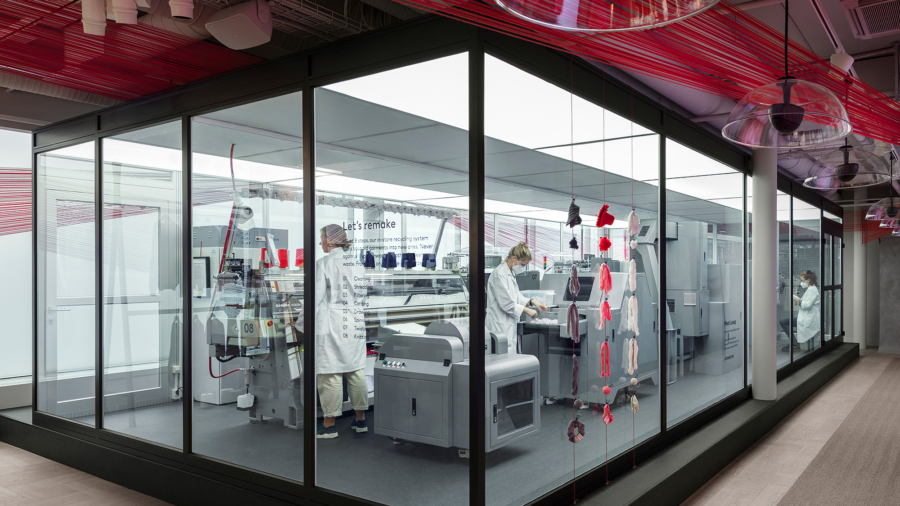Fast fashion chain H&M wants to turn discarded clothes into something new to wear again—within five hours.
The Sweden-based retailer is about to start giving consumers at its Stockholm store the option to turn in used garments that it will then transform into one of three different clothing items.
Once the program begins Monday, customers will be able to bring in a garment they don’t want, which will be cleaned and put into a machine called Looop. The machine will disassemble it, shredding it into fibers that are then used to create new clothing.
The effort comes amid a rising volume of global clothing waste, and growing concern over fast fashion’s contribution to it.
The company said the recycling process, which can handle more than one garment at a time, doesn’t use water or chemicals and sometimes might need “sustainably sourced” raw materials added in, but it hopes to make “this share as small as possible.”
The entire process takes about five hours and is visible to shoppers
For now, customers can choose one of three items to be made—a sweater, a baby blanket, or a scarf—for a fee of $11 to $16.
“We are looking to expand the range available as we get to know Looop better,” the company said in an email to CNNBusiness.

H&M said the system is currently only available in Sweden, where H&M is based. It declined to reveal what future plans it may have to expand Looop, if any.
While the Looop system could help spread awareness about clothing waste and recycling, for now it lacks the scale to make any widespread impact on the volume of clothing waste generated annually.
According to the Environmental Protection Agency’s website, 16.9 million tons of textile waste was generated in the United States in 2017, the latest data available. The recycling rate was just 15.2 percent, with 2.6 million tons recycled.
“Fast fashion has had an impact on this because so much of the clothing is not well constructed or made with synthetic materials that can’t be easily recycled,” said Jackie King, executive director of the Secondary Materials and Recycled Textiles Association, a trade group for the textile recycling industry.
H&M and other fast fashion sellers like Zara have taken some steps to curtail textile waste.
In 2013, H&M launched a global garment collecting program in all of its stores and has set a goal of having all clothing sold in its stores be made from recycled or sustainably sourced materials by 2030. That figure currently stands at 57 percent, according to the company.
Similarly, customers can drop off used clothing, footwear, and accessories in more than 1,300 Zara stores. Last year, Zara announced that all of the cotton, linen, and polyester used by the company will be organic, sustainably sourced, or recycled by 2025.
“One of the biggest drivers of clothing over consumption are fast fashion sellers,” said Deborah Drew, analyst and social impact lead with the global research non-profit World Resources Institute. “Large companies like H&M and Zara can have a really big, transformational impact on the industry and on consumers if they lead the way in facilitating change.”


